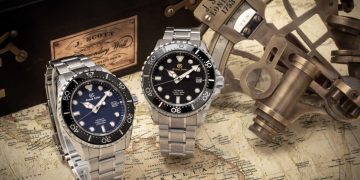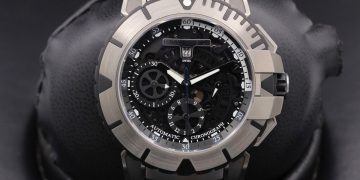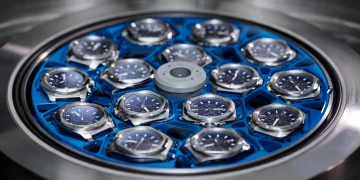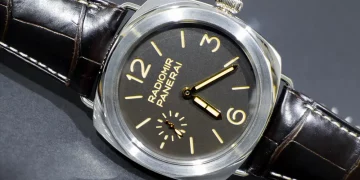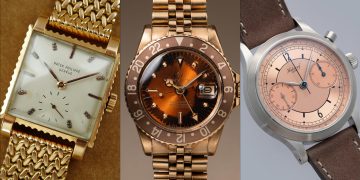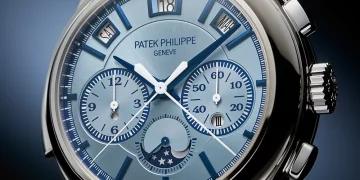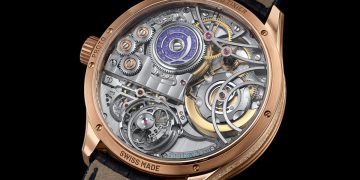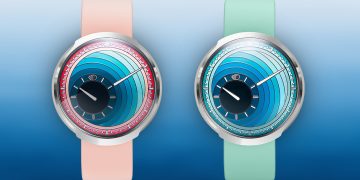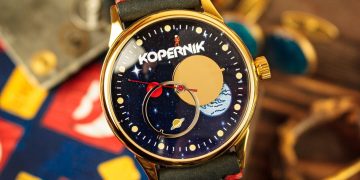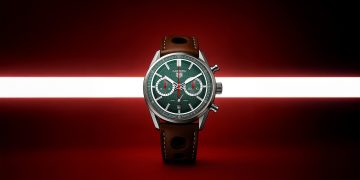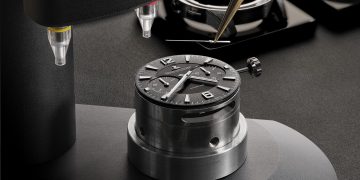The art of watchmaking, with its intricate movements, precision, and attention to detail, has been around for centuries. For much of its history, the craft has remained relatively unchanged, with watchmakers relying on time-honored techniques and tools passed down through generations. However, as with many other industries, the rapid advancement of technology in recent years has started to make its presence felt in the watchmaking world, offering new opportunities and challenges for traditional horology.
In a world where technological innovation often drives change in almost every sector, the watchmaking industry is no exception. Modern technology is now not only enhancing the precision and efficiency of traditional craftsmanship but also reimagining how watches are designed, manufactured, and even worn. From new materials and advanced manufacturing techniques to digital integration and smart features, technology is revolutionizing the way timepieces are created while still respecting the artistry and history behind them.
In this article, we will explore how modern technology is redefining traditional watchmaking craftsmanship. We will examine the impact of new technologies on materials, design, manufacturing processes, and even functionality, and consider whether the fusion of tradition and innovation will shape the future of horology.
1. The Evolution of Materials: From Classic Alloys to Modern Composites
One of the most significant ways modern technology is influencing watchmaking is through the development of new materials. Traditionally, watchmakers have used metals like stainless steel, gold, and platinum, as well as materials like sapphire crystal and leather, to construct their timepieces. These materials are revered for their durability, aesthetics, and functionality, but they also come with limitations.
With advancements in material science, watch brands are now incorporating high-tech materials into their designs, pushing the boundaries of what a timepiece can be. Titanium, carbon fiber, ceramics, and silicon are among the new materials that are changing the landscape of traditional watchmaking.
a. Titanium and Carbon Fiber
Titanium is significantly lighter than stainless steel and is highly resistant to scratches and corrosion. Its use in watchmaking provides wearers with a more comfortable and durable experience, while its sleek, modern aesthetic appeals to contemporary tastes. Brands like IWC and Omega have already introduced titanium cases, giving their watches a cutting-edge look and feel without sacrificing the quality associated with traditional watchmaking.
Similarly, carbon fiber is a material that has gained popularity in watchmaking due to its lightness, strength, and modern appeal. The material’s unique texture and appearance have led to the creation of innovative, sporty timepieces. Watches using carbon fiber are lighter, tougher, and more resistant to environmental stressors, making them ideal for high-performance or extreme conditions.
b. Silicon Escapements and Components
Silicon has become one of the most groundbreaking materials in modern horology, especially when it comes to escapements and other critical components. The material’s low friction, anti-magnetic properties, and resistance to wear make it ideal for the internal mechanisms of watches. Swiss watchmaker Rolex, for example, uses a silicon hairspring (Parachrom) in many of its movements to improve precision and reliability.
The use of silicon components has allowed traditional watchmakers to achieve greater accuracy, durability, and longevity. These advancements are not only redefining how watches function but are also offering innovations in terms of long-term performance. Brands like Omega, Audemars Piguet, and Patek Philippe are leading the way in incorporating silicon into their movements, elevating the mechanical watchmaking experience.
2. Precision Manufacturing: CNC and 3D Printing
The precision and quality expected in traditional watchmaking have always been central to the craft’s allure. However, the introduction of modern manufacturing technologies like CNC (Computer Numerical Control) machining and 3D printing has dramatically improved the accuracy and efficiency with which components are made.
a. CNC Machining
CNC machining has revolutionized the way watch parts are crafted. Previously, many components were handmade or created with rudimentary tools. Today, CNC machines allow for ultra-precise production of small, intricate parts with minimal human intervention. These machines follow pre-programmed designs, ensuring that each component is manufactured to the exact specifications required.
This increased precision means that watchmakers can create more complex movements and intricate designs than ever before. Even the smallest parts, such as gears, screws, and bridges, are produced with perfect accuracy, reducing the potential for errors and improving the overall performance of the watch.
b. 3D Printing
Another technological breakthrough that is reshaping the world of watchmaking is 3D printing. While still in the early stages of adoption, 3D printing allows for the creation of parts that were previously too difficult or expensive to produce using traditional methods. For example, complex geometries, intricate patterns, and customized designs can now be printed in a variety of materials, including metals, plastics, and ceramics.
Brands like Audemars Piguet have experimented with 3D printing to create prototypes and even fully functional parts, which opens up new possibilities for limited-edition designs and unique customer requests. Additionally, 3D printing allows watchmakers to reduce waste and production costs by utilizing additive manufacturing techniques that build parts layer by layer rather than cutting away material.
3. Smart Technology: Blending Traditional Craftsmanship with Modern Features
In recent years, the rise of smartwatches has brought a new wave of technology into the world of horology, prompting traditional watchmakers to innovate in ways that allow them to remain competitive. Smartwatches, such as those from Apple, Garmin, and Fitbit, offer functionalities like health tracking, notifications, and connectivity, all while maintaining a sleek, modern design.
Traditional luxury brands have recognized the importance of integrating technology without compromising their heritage of craftsmanship. As a result, many established watchmakers have ventured into the world of connected watches or hybrid timepieces that combine mechanical movements with smart features.
a. Hybrid Watches
Hybrid watches blend traditional mechanical watchmaking with modern smartwatch features. These timepieces often feature analog dials paired with digital sensors and Bluetooth capabilities. The movement of the watch remains mechanical, but it integrates modern technology to provide features such as activity tracking, heart rate monitoring, and even sleep analysis. Brands like Fossil, TAG Heuer, and Garmin have successfully introduced hybrid watches that appeal to both traditional watch lovers and those seeking modern technology.
b. Connected Watches
Connected watches, such as the TAG Heuer Connected and the Garmin Fenix series, offer advanced features like GPS, health monitoring, and smartphone integration, while still retaining the aesthetic appeal of luxury timepieces. These watches may still feature traditional mechanical movements, but they also incorporate touchscreens, sensors, and other digital components that enhance their functionality.
For luxury watchmakers, this technology-driven hybridization allows them to reach a new demographic—tech enthusiasts and younger buyers—while maintaining their traditional values of craftsmanship and design.

4. Innovative Design and New Aesthetic Frontiers
Modern technology is not only influencing the inner workings of timepieces but is also shaping the outer design of watches. The ability to experiment with new materials, computer-aided design (CAD), and advanced manufacturing techniques has allowed watchmakers to explore new design possibilities that were previously out of reach.
a. Computer-Aided Design (CAD)
With the advent of CAD software, designers can now create intricate watch designs with unparalleled precision. CAD allows for the visualization of designs in 3D before physical prototypes are made, which means that watchmakers can experiment with shapes, materials, and movements much more easily. This technology allows for more ambitious and unconventional designs while ensuring that every element of the watch is optimized for performance.
b. New Aesthetic Possibilities
Technology has also opened the door to more radical and innovative aesthetics. Watches are now available in a variety of colors, textures, and finishes, with innovative techniques such as laser engraving, diamond cutting, and even electroplating used to create intricate patterns and unique visual effects. These new design techniques allow watchmakers to craft timepieces that reflect modern tastes while still adhering to the principles of traditional craftsmanship.
5. The Future of Watchmaking: A Fusion of Tradition and Innovation
As we look toward the future of watchmaking, it seems clear that modern technology will continue to play a critical role in redefining the craft. The challenge for watchmakers lies in balancing the rich heritage of traditional horology with the demands of the modern consumer. Technology can enhance traditional craftsmanship, making it more precise, efficient, and functional without erasing the artistry that makes horology so special.
The fusion of modern materials, manufacturing techniques, smart technology, and design innovation offers exciting new possibilities for the watch industry. However, it is essential that watchmakers stay true to their heritage, maintaining the artistry, skill, and passion that have made traditional watchmaking such a revered craft.
In the end, modern technology does not need to replace traditional craftsmanship—it can, and should, complement it, creating a new era of watchmaking that respects the past while embracing the future. As technology continues to evolve, the possibilities for the future of horology are limitless, with endless opportunities to push the boundaries of design and innovation while staying grounded in the history and traditions that define the world of luxury timepieces.


